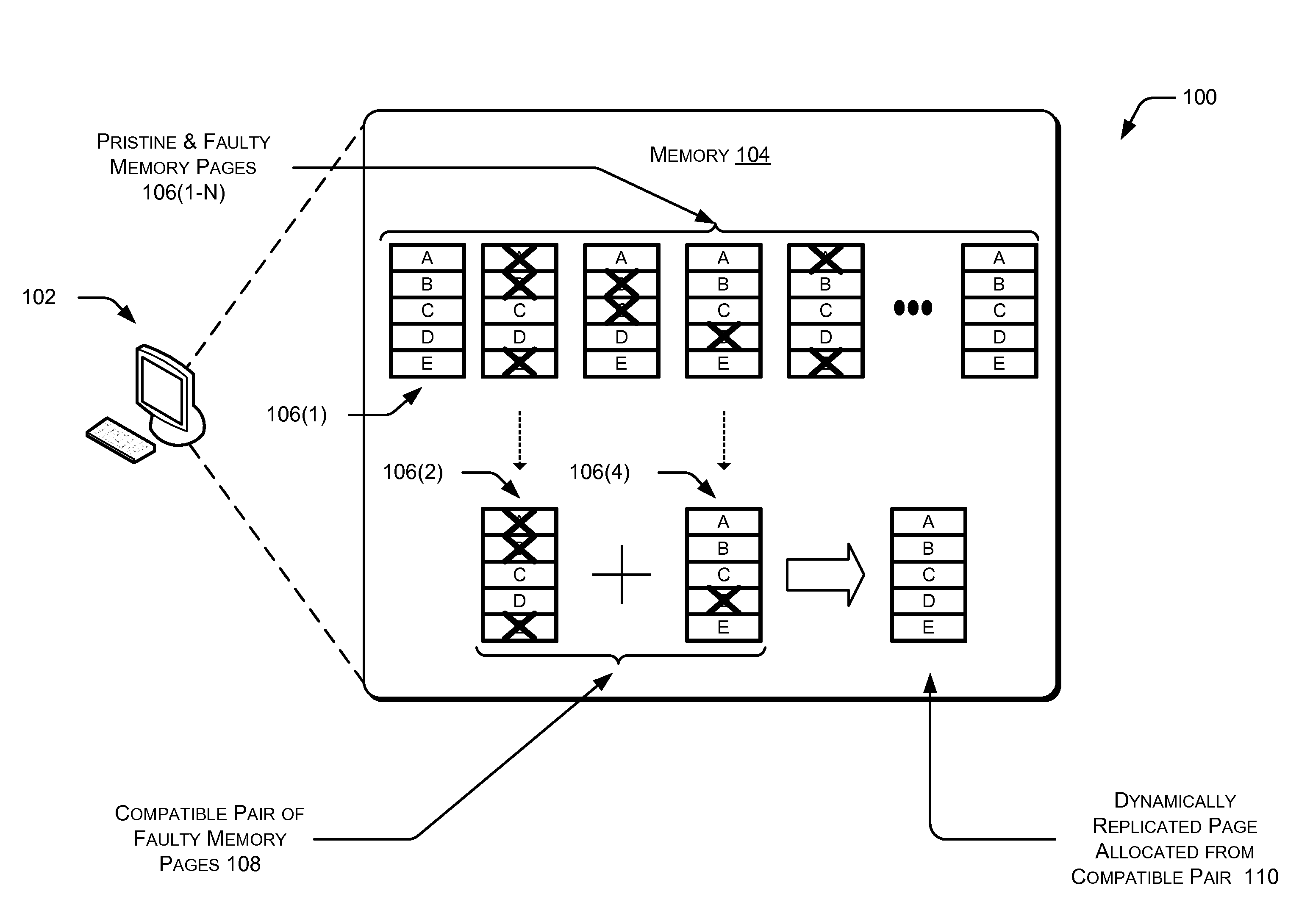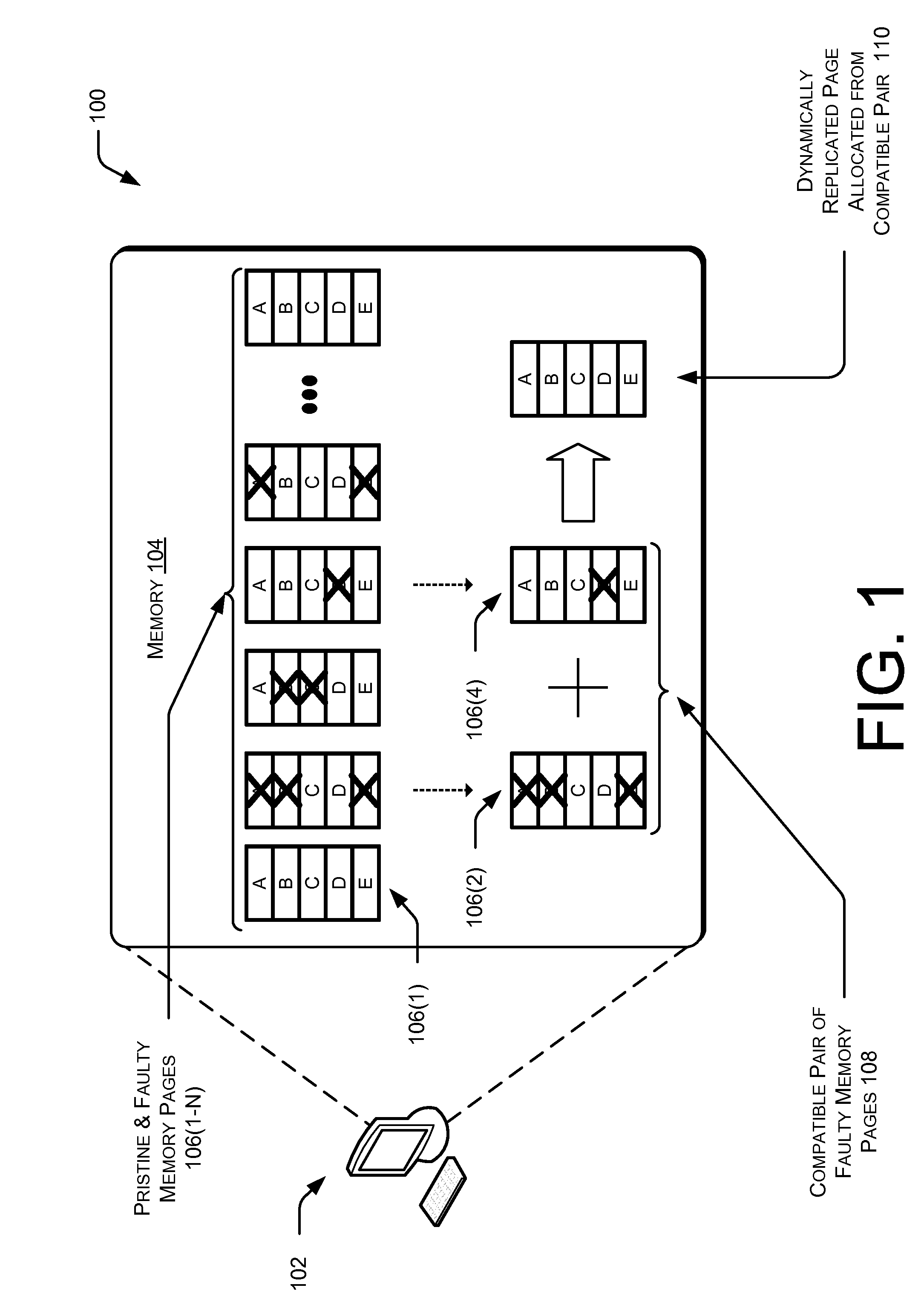Dynamically replicated memory
a memory and dynamic replication technology, applied in the field of dynamic replication memory, can solve the problems of individual atoms and electrons having negative effects on data storage correctness, end of dram scaling, and memory scaling is not without its problems
- Summary
- Abstract
- Description
- Claims
- Application Information
AI Technical Summary
Benefits of technology
Problems solved by technology
Method used
Image
Examples
Embodiment Construction
Overview
[0029]This disclosure describes detection of and recovery from hardware memory failures. In particular, a hard failure detection mechanism is used to find the failures and then memory is dynamically replicated to allow for a graceful degradation of memory capacity.
[0030]As discussed above, PRAM is write-limited. That is, PRAM cells can only correctly record data up to a certain number of data writes. For example, at the 65 nm technology node, a PRAM cell is only expected to sustain 108 writes before the cell's heating element breaks and induces a stuck-at fault, where writes are no longer able to change the value stored in the PRAM cell. This limitation could potentially lead to large-scale capacity problems in computer systems of all types. This is because, historically, when a bit failure occurs on a PRAM page that error-correcting code (ECC) cannot handle, the entire page will be decommissioned. Over the life of a computer device, this could translate to significant memor...
PUM
 Login to View More
Login to View More Abstract
Description
Claims
Application Information
 Login to View More
Login to View More - R&D
- Intellectual Property
- Life Sciences
- Materials
- Tech Scout
- Unparalleled Data Quality
- Higher Quality Content
- 60% Fewer Hallucinations
Browse by: Latest US Patents, China's latest patents, Technical Efficacy Thesaurus, Application Domain, Technology Topic, Popular Technical Reports.
© 2025 PatSnap. All rights reserved.Legal|Privacy policy|Modern Slavery Act Transparency Statement|Sitemap|About US| Contact US: help@patsnap.com



